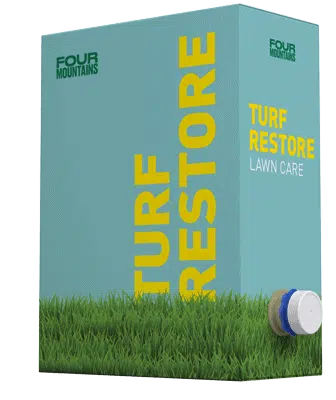Why You Should Replace Pails With Bag-in-Box
Pails are an Outdated Packaging Format. Move Towards a Sustainable Future with Bag-in-box.
Plastic pails are currently used to package a number of goods across a variety of industries. Most pails come in 1- or 5-gallon sizes and are made with high-density polyethylene (HDPE), a rigid plastic that, according to the Environmental Protection Agency (EPA), is only recycled about 30% of the time.
 Plastic pails have been used as packaging and storage solutions for decades, and their continued use is nothing more than a relic—something that continues to be used simply because it’s what has been done in the past. Bag-in-box is a better solution designed with the future in mind: bag-in-box delivers products more efficiently and has a much smaller environmental footprint than plastic pails.
Plastic pails have been used as packaging and storage solutions for decades, and their continued use is nothing more than a relic—something that continues to be used simply because it’s what has been done in the past. Bag-in-box is a better solution designed with the future in mind: bag-in-box delivers products more efficiently and has a much smaller environmental footprint than plastic pails.
Innovation is at the core of what we do at Scholle IPN. We develop new, better, and more efficient packaging solutions that are responsibly made and sustainably sourced. Here’s how switching from plastic pails to bag-in-box can help you reach your environmental goals while reducing waste and unnecessary spending along the distribution line.
Break the Habit
Scholle IPN’s focus is always on improvement. We don’t just sit with an idea—we constantly work to make our products better for our users and the environment. Plastic pails were once an answer to growing storage and distribution needs, but now that more and more companies are focused on sourcing sustainable materials for their packaging, it’s clear pails represent an outdated mode of packaging.
 Most companies still using pails are likely doing so out of convention and convenience. “It’s a common packaging format for most agricultural products and dry goods,” says Andrew Lively, Business Development Manager for Scholle IPN. “Pails are easy to fill, and you do have to invest in equipment if you want to switch to bag-in-box.”
Most companies still using pails are likely doing so out of convention and convenience. “It’s a common packaging format for most agricultural products and dry goods,” says Andrew Lively, Business Development Manager for Scholle IPN. “Pails are easy to fill, and you do have to invest in equipment if you want to switch to bag-in-box.”
While bag-in-box requires an initial upfront investment, pails incur costs throughout the supply chain that are easy to miss, but add up quickly. Pails are difficult to make, and most companies that use pails to store their product have to outsource manufacturing to bigger plastics companies. Pails then have to be transported—empty, with no product—filled, and then transported again, often inefficiently due to their shape (stacking and storing a circular item always means that there will be inefficiencies and dead space).
The investment with bag-in-box comes early in the process but yields results immediately. “The amount of plastic used is much less, the amount of carbon emissions it takes to produce a bag-in-box is much less,” Lively says. He also cites other immediate savings like less money spent on transport (bag-in-box can be produced on-site or shipped pre-made with relatively little overhead), more efficiency when palletized (bag-in-box packaging has +95% cube efficiency on pallets), and reduced product and packaging waste.
Source Reduction Throughout the Supply Chain
Even though the EPA reports that HDPE products are recycled less than 30% of the time, it’s easy to see pails as an environmentally-friendly packaging solution. A farmer might reuse a pail for feed, for example. But like glass, manufacturing pails is an extremely taxing endeavor that eats up a lot of precious resources.
Bag-in-box is a significantly more sustainable packaging solution, particularly when you zoom out and look at the entire supply chain. Often, when we think about sustainability, we tend to narrow in on the end-of-life treatment of a product—that’s why the action of a farmer reusing a pail would translate a more responsible packaging choice, rather than a solution that saves energy and resources from beginning to end.
When compared to 5-gallon pails, bag-in-box cuts greenhouse gas emissions by up to 52% and energy in production by up to 81%. Bag-in-box also has up to a 99% evacuation rate; that means nearly all the product inside the bag can be used, versus a pail where you have to scrape and struggle to get everything out.
If you’re considering bag-in-box, Scholle IPN offers a number of recycle-ready films. We continue to push new ideas to make recycling easier. For example, we recently launched a line of tethered fitments that are compliant with EU regulations and cut back on waste due to more efficient engineering and reduced product loss during use (caps aren’t being discarded or going missing, which means they’re much more likely to be recycled).
Bag-in-box isn’t just a better flexible packaging solution: it’s a better flexible packaging solution that will continue to improve over time. Our commitment to innovation means we’ll always pursue new ideas and provide sustainable options.
Building Flexible Options
 If you’ve ever lifted a 5-gallon pail of anything, you know how heavy these buckets can be. Most pails come in one of two sizes: the 1- or 5-gallon pail. “If a customer doesn’t need a 5-gallon packaging solution, they’re stuck because pails mostly come in 5-gallon formats,” Lively says. Bag-in-box packaging solutions can be designed to fit any size needs, from 1-liter retail bags to industrial-sized bags for storage.
If you’ve ever lifted a 5-gallon pail of anything, you know how heavy these buckets can be. Most pails come in one of two sizes: the 1- or 5-gallon pail. “If a customer doesn’t need a 5-gallon packaging solution, they’re stuck because pails mostly come in 5-gallon formats,” Lively says. Bag-in-box packaging solutions can be designed to fit any size needs, from 1-liter retail bags to industrial-sized bags for storage.
Filling machines can also adapt to different sizes: if you need to package 1-liter bags one day and 5-liter bags the next, the same equipment can be utilized. Lively says that with pails, different sized fillers often need to be procured, limiting the amount of flexibility a company can exercise.
Pails are also restricted in how safely they can be packaged and stored. “Bag-in-box gives suppliers a way to look at other processing formats,” Lively shares. Bag-in-box is a format that can be adapted for aseptic filling (an area we specialize in), hot-fill, Clean Fill (ambient), and ultra-clean (ESL).
Above all else, we make bag-in-box solutions that can be adapted to your needs, and we’ll work with you to figure out the best format for your products. “Our packaging is used in a variety of industries, so product integrity is important to us,” Lively says. “Our packaging works to ensure that our customer’s product arrives to the consumer in the manner they intended. That’s the ideal we design our packaging and fitments around. We try to understand what our customers want and work backwards from that.”
If you’re ready to make the switch from pails to bag-in-box, please drop us a line—no matter where you are in the process, we can help walk you through your options and answer any questions.
